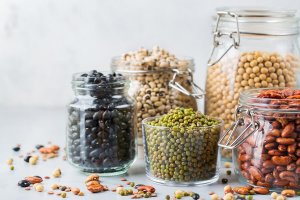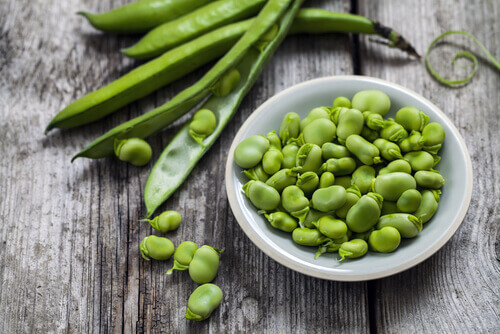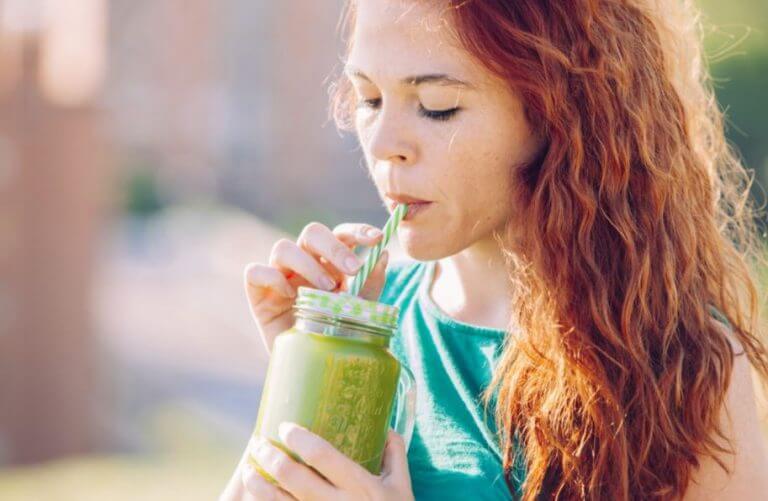How to Use Vegetable Proteins to Boost Your Performance

Before we dive into how you can “build” complete proteins from vegetable proteins, it’s important to know what exactly a protein is. On the other hand, it’s also key to understand the differences between vegetable and animal protein.
What are proteins?
Simply put, proteins are amino acid chains. These amino acids are the base of our energy levels and they help your body carry out all of its metabolic functions.
The human body can’t store protein, so this has to come from our diets. There are 22 types of amino acids, but there are nine that the body can’t produce. These nine amino acids are called “essentials” because they need to come from our diets and are required for your body to function properly.
When a given food contains all nine essential amino acids, it’s called a “complete protein”. In this sense, animal and vegetable proteins are very different. Most animal products are complete protein sources.
On the other hand, the majority of vegetable protein is incomplete. This means, vegetables usually have some, but not all, of the nine essential amino acids. Plus, vegetable protein also has lower digestibility than animal protein.
Nevertheless, this doesn’t mean that you can’t have a healthy protein intake with a meatless diet. The key lies in understanding how to combine and plan your meals to merge different vegetable protein sources. By doing this, you’ll be able to avoid deficiencies or a decrease in sports performance.
Of course, it’s also important to remember that protein is the main nutrient for the construction and repair of tissue, so an inadequate contribution of it can lead to a muscle injury.
Combining proteins for a balanced diet
To obtain all of the amino acids you need from vegetable proteins, the key is to combine foods. In this way, if you combine legumes with cereals, you can ensure you’re getting a higher quality protein.
However, it’s important to remember that vegetable protein has a significantly lower digestibility than animal protein. On the other hand, the proportion of protein in vegetables is also lower than in animals, so you’ll need to eat a larger portion to achieve the same nutritional values.
Other sources of vegetable protein
There are more vegetable protein sources than cereals and legumes. There are also nuts!
Nuts have a relatively high proportion of proteins and fats paired with a high caloric value. Because of this, it isn’t advisable to eat more than a handful daily. This will prevent you from having too many calories in your diet.
Nevertheless, although the protein in nuts is quite high, they remain deficient in some essential amino acids. Therefore, it’s a good idea to consume different nuts or combine them with other foods, such as legumes or cereals.

Vegetable proteins and supplementation
In vegan diets, protein intake is usually poor. Because of this, it isn’t a bad strategy to add a protein shake throughout the day to boost your intake. Usually, you’ll get soy or pea proteins in powder form, which have a complete amino acid count.
In addition, these types of products also pack digestive enzymes in their composition, which improves the digestibility of the protein itself and corrects this shortcoming.
Nevertheless, if you follow a balanced diet that includes meat you usually wouldn’t need protein supplementation. Of course, there are some exceptions to this rule: elite athletes usually need that protein boost especially if they follow a meatless diet.
In this sense, for vegan or vegetarians, protein supplementation is a must. The same goes for vitamins B12 and D: people who follow meatless diets should look into supplementing their intake.
On top of this, adding a leucine supplement might be a good idea if you want to maximize tissue recovery. Supplements such as leucine are effective in reducing pain or improving recovery in situations of high sports stress.
Using vegetable proteins to boost muscle gains
If you’re an athlete looking to gain muscle mass, it might be a good idea to combine protein intake with a carbohydrate portion. In this way, you’ll be optimizing the activation of the mTor metabolic pathway, in charge of carrying out various anabolic processes, such as protein synthesis.
If you’d rather not consume extra supplements and would rather consume solid plant-type foods, you can do this as well. So, if for example, you’re having beans as your main protein, you can pair it with a portion of fast-absorbing carbs such as rice. In turn, this will promote insulin production and boost your muscle gain.

Vegetable proteins: closing thoughts
Of course, one of the dangers of vegan or vegetarian diets is that they can be protein-deficient. Thus, this deficit can worsen athletic performance.
In order to correct this protein deficiency, it’s essential that you eat a variety of vegetables on a daily basis. In this way, you can lower the deficiencies of essential amino acids. Nuts also represent a key point in protein intake in this type of diet.
On the other hand, to correct the digestibility problem of vegetable protein, the only solution is to include vegetable protein supplements enriched with digestive enzymes in the diet. Finally, we must also bear in mind that plant foods have less protein per 100 grams than animal products. Thus, you should take this into account when planning your vegetable protein intake without falling into a hypercaloric diet.
Before we dive into how you can “build” complete proteins from vegetable proteins, it’s important to know what exactly a protein is. On the other hand, it’s also key to understand the differences between vegetable and animal protein.
What are proteins?
Simply put, proteins are amino acid chains. These amino acids are the base of our energy levels and they help your body carry out all of its metabolic functions.
The human body can’t store protein, so this has to come from our diets. There are 22 types of amino acids, but there are nine that the body can’t produce. These nine amino acids are called “essentials” because they need to come from our diets and are required for your body to function properly.
When a given food contains all nine essential amino acids, it’s called a “complete protein”. In this sense, animal and vegetable proteins are very different. Most animal products are complete protein sources.
On the other hand, the majority of vegetable protein is incomplete. This means, vegetables usually have some, but not all, of the nine essential amino acids. Plus, vegetable protein also has lower digestibility than animal protein.
Nevertheless, this doesn’t mean that you can’t have a healthy protein intake with a meatless diet. The key lies in understanding how to combine and plan your meals to merge different vegetable protein sources. By doing this, you’ll be able to avoid deficiencies or a decrease in sports performance.
Of course, it’s also important to remember that protein is the main nutrient for the construction and repair of tissue, so an inadequate contribution of it can lead to a muscle injury.
Combining proteins for a balanced diet
To obtain all of the amino acids you need from vegetable proteins, the key is to combine foods. In this way, if you combine legumes with cereals, you can ensure you’re getting a higher quality protein.
However, it’s important to remember that vegetable protein has a significantly lower digestibility than animal protein. On the other hand, the proportion of protein in vegetables is also lower than in animals, so you’ll need to eat a larger portion to achieve the same nutritional values.
Other sources of vegetable protein
There are more vegetable protein sources than cereals and legumes. There are also nuts!
Nuts have a relatively high proportion of proteins and fats paired with a high caloric value. Because of this, it isn’t advisable to eat more than a handful daily. This will prevent you from having too many calories in your diet.
Nevertheless, although the protein in nuts is quite high, they remain deficient in some essential amino acids. Therefore, it’s a good idea to consume different nuts or combine them with other foods, such as legumes or cereals.

Vegetable proteins and supplementation
In vegan diets, protein intake is usually poor. Because of this, it isn’t a bad strategy to add a protein shake throughout the day to boost your intake. Usually, you’ll get soy or pea proteins in powder form, which have a complete amino acid count.
In addition, these types of products also pack digestive enzymes in their composition, which improves the digestibility of the protein itself and corrects this shortcoming.
Nevertheless, if you follow a balanced diet that includes meat you usually wouldn’t need protein supplementation. Of course, there are some exceptions to this rule: elite athletes usually need that protein boost especially if they follow a meatless diet.
In this sense, for vegan or vegetarians, protein supplementation is a must. The same goes for vitamins B12 and D: people who follow meatless diets should look into supplementing their intake.
On top of this, adding a leucine supplement might be a good idea if you want to maximize tissue recovery. Supplements such as leucine are effective in reducing pain or improving recovery in situations of high sports stress.
Using vegetable proteins to boost muscle gains
If you’re an athlete looking to gain muscle mass, it might be a good idea to combine protein intake with a carbohydrate portion. In this way, you’ll be optimizing the activation of the mTor metabolic pathway, in charge of carrying out various anabolic processes, such as protein synthesis.
If you’d rather not consume extra supplements and would rather consume solid plant-type foods, you can do this as well. So, if for example, you’re having beans as your main protein, you can pair it with a portion of fast-absorbing carbs such as rice. In turn, this will promote insulin production and boost your muscle gain.

Vegetable proteins: closing thoughts
Of course, one of the dangers of vegan or vegetarian diets is that they can be protein-deficient. Thus, this deficit can worsen athletic performance.
In order to correct this protein deficiency, it’s essential that you eat a variety of vegetables on a daily basis. In this way, you can lower the deficiencies of essential amino acids. Nuts also represent a key point in protein intake in this type of diet.
On the other hand, to correct the digestibility problem of vegetable protein, the only solution is to include vegetable protein supplements enriched with digestive enzymes in the diet. Finally, we must also bear in mind that plant foods have less protein per 100 grams than animal products. Thus, you should take this into account when planning your vegetable protein intake without falling into a hypercaloric diet.
All cited sources were thoroughly reviewed by our team to ensure their quality, reliability, currency, and validity. The bibliography of this article was considered reliable and of academic or scientific accuracy.
- Osmond AD., Directo DJ., Elam ML., Juache G., Kreipke VC., Saralegui DE., Wildman R., Wong M., Jo E., The effects of leucine-enriched branched-chain amino acid supplementation on recovery after high-intensity resistance exercise. Int J Spotts Physiol Perform, 2019. 14 (8): 1081-1088.
- Liu GY., Sabatini DM., mTor at the Nexus of nutrition, growth, ageing and disease. Nat Rev Mol Cell Biol, 2020.
This text is provided for informational purposes only and does not replace consultation with a professional. If in doubt, consult your specialist.








